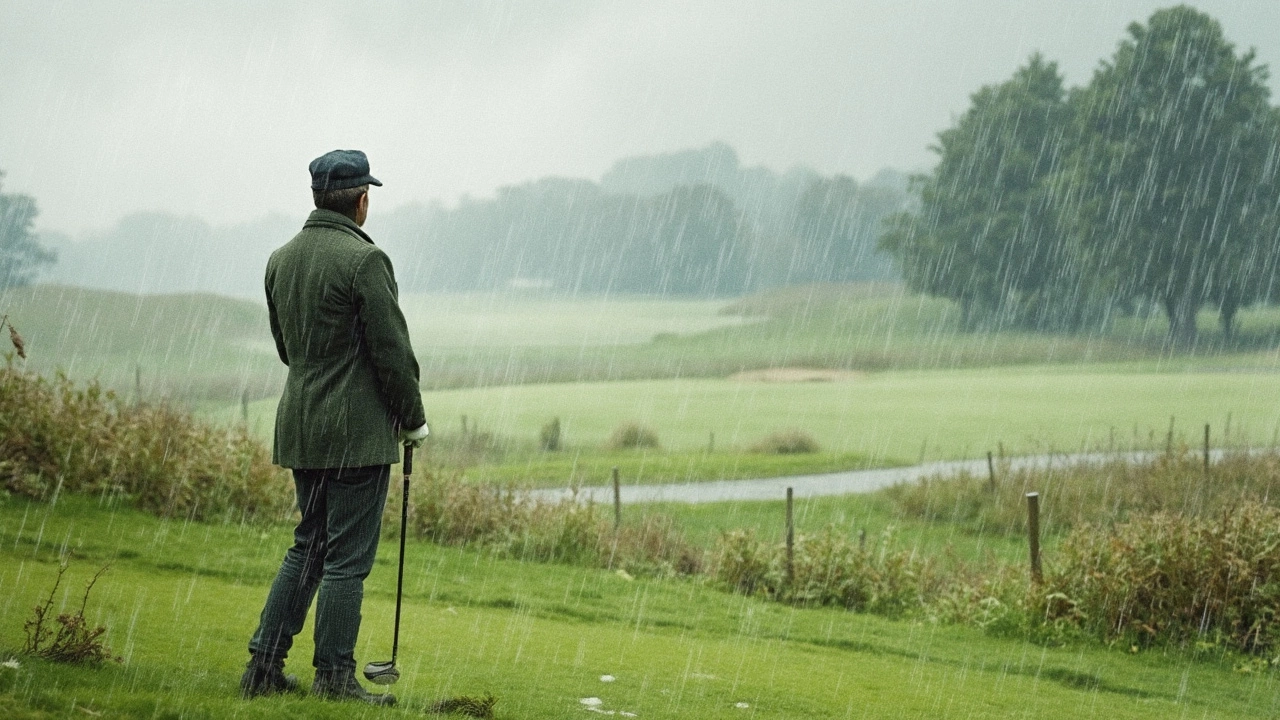Why is Golf So Hard? Exploring the Challenges of the Game

If you've ever swung a club, you know that golf isn't as breezy as it seems on TV. It's like trying to solve a puzzle with a ball that just doesn't want to cooperate. But why is it so difficult? Well, for starters, the terrain is nothing like a flat soccer field. Each course is its own beast—hills, sand traps, water hazards. It's a bit like being handed a map with new obstacles each time you play.
But it's not just the physical stuff. Most of the game is in your head. Keeping focus, managing frustration, and staying calm under pressure can be tougher than the longest drive. Ever noticed how pros seem to stroll calmly while the rest of us are strategizing our next shot? That's the mental game at work.
The Unique Terrain
Golf courses are like snowflakes—no two are exactly the same. This variety is a huge part of why plenty of folks find the game downright tricky. Imagine playing a game where the field keeps changing with every round. Even if you're at the same course, the weather and pin placement can make everything feel different from one day to the next.
Most courses are full of surprises. Hills, valleys, sand traps, and water hazards aren't there for decoration. They're designed to test your skills. Navigating these golf challenges requires a mix of strategy and skill that can stump even experienced players.
If you've ever wondered why golf feels a bit like stepping into the wild, consider this: each hole can stretch over 400 yards with all sorts of obstacles. It's like walking and thinking your way through a natural obstacle course with a heavy dose of patience and precision.
Some of the most famous courses in the world, like St. Andrews in Scotland or Augusta National in the U.S., are known for their difficulty and intricate designs. These courses often factor in the landscape to create a variety of challenging shots, leaving players to think on their feet (or rather, their swings).
When you encounter a course with a high slope rating, which measures the course's difficulty for a bogey golfer, you know you're in for a test. For instance, a slope rating of 155 is considered extremely challenging. It's no wonder golfers spend so much time practicing and planning their rounds.
So next time you're out there, and the course feels more like a battle than a friendly game, remember, it's not just you. The terrain is intentionally complex, designed to push even seasoned players out of their comfort zone.
Mental Game Strategies
When it comes to golf, conquering the mind might be tougher than perfecting your swing. The game demands focus, patience, and a positive attitude—basically, your brain doing all the heavy lifting. Ever wonder why even experienced golfers choke on straightforward putts? It's because golf is largely a mental game, and handling pressure is a skill.
One way to tackle this is through visualization. Picture your success before you hit the ball. Imagine the ball soaring through the air and landing exactly where you want it. This keeps your mind focused and your body relaxed. Plus, it's been shown that athletes who visualize their moves perform better. Neat, right?
Also, managing emotions on the course is vital. You've probably seen a pro in deep thought before a shot. They're talking themselves through the steps and calming nerves. Self-talk isn't just motivational mumbo jumbo—it's actually proven to help control emotions and boost confidence. Next time you're stressed, try telling yourself, "I've got this!"
And don't forget about routines. Just like your favorite sports stars have those quirky pre-game rituals, golfers can benefit from pre-shot routines. It's all about consistency. Whether it's lining up your shot in a specific way or taking a deep breath before swinging, this consistency helps create a strong mental foundation under pressure.
If you're all about numbers, here's something interesting. A study showed that golfers who used mental game strategies improved their scoring average by up to two strokes. That might not sound like much, but in golf, every stroke counts.
- Visualize success before swinging.
- Use positive self-talk to stay confident.
- Develop a consistent pre-shot routine.
- Simplify decisions to avoid overthinking.”
Mastering these strategies can make a world of difference as you navigate any golf course. The mental game might not be visible, but it's as real as any sand trap!

Weather's Unpredictable Impact
So, why is golf so hard? Well, let's talk about the weather. Ever tried to play when the wind seems to have a personal vendetta against your ball? It's like nature's own little prank on golfers. Imagine lining up the perfect shot, only to have a gust of wind send your ball flying into the rough. Welcome to the unpredictable world of golf weather.
In fact, the weather can dramatically change the dynamics of a game. Sun, rain, and wind each bring their own set of challenges. Rain can make greens softer, which might sound good, but it also means you'll have to adjust how hard you hit the ball. And let’s not forget humidity. It may not seem like a big deal, but increased air density means your ball won't travel as far. It's all about adapting your technique each time nature decides to switch things up.
According to data, even a slight breeze can push a golf ball off its intended path. When winds reach 20 mph, it can sway your drive by about 20-30 yards. That’s a big effect from a seemingly small factor!
For those looking to up their game despite the weather, here are some tips:
- Check the forecast: Always know what you're getting yourself into. Planning for the weather helps manage expectations and strategy on the course.
- Learn wind adjustments: Practice hitting in different wind conditions. It’s about feeling how hard to hit and which direction to aim.
- Adapt quickly: Be ready to change your approach based on what's happening around you. Flexibility is key when battling the elements.
Crazy, right? But that's also part of what makes golf such an enticing challenge. Every game offers a new obstacle in the form of weather. So next time you’re out there and the wind picks up, remember you’re not just fighting your skills but also the whims of Mother Nature.
Tips for Improvement
So, you're ready to take on golf's challenges and improve your game? Awesome move! Here are a few practical pointers that can help sharpen your skills and maybe even impress your buddies on the course.
First off, practice your swing. Seems obvious, right? But it's crucial. Consistency is key and swinging consistently well involves repeating the motion until it becomes second nature. To really get a grip on it, try recording your swing. Watching playback can highlight what you're doing right and what might need a tweak.
Alignment is another biggie. Make sure your feet, hips, and shoulders line up correctly with your target. It's pretty common to think you're aiming straight, when you're actually a little off. Create muscle memory by using alignment sticks during practice.
Mental prep is just as important. A positive mindset can do wonders. Visualize your shot before you take it. Imagine the ball's path and where you want it to land. This can boost your confidence and your focus on executing a successful shot.
And let's not ignore the importance of fitness and flexibility. A strong core contributes to a more powerful swing, and good flexibility can prevent injuries and improve your range of motion. Include exercises in your routine that cater to these aspects.
- Warm-up before playing - Gets your muscles ready and reduces injury risks.
- Focus on putting - Since nearly half of your strokes happen on the green, putting practice is non-negotiable.
- Embrace short game drills - Mastering chipping and pitching can save strokes and lower scores.
Finally, consider taking lessons from a pro. It might be an investment, but having someone experienced point out areas for improvement can speed up your progress.
